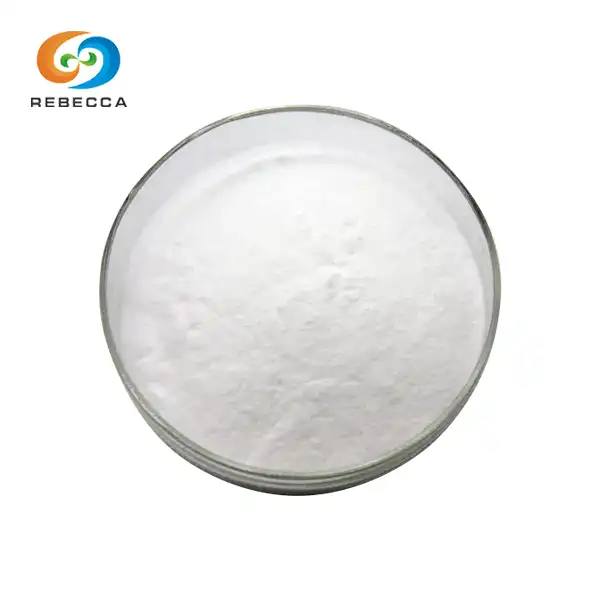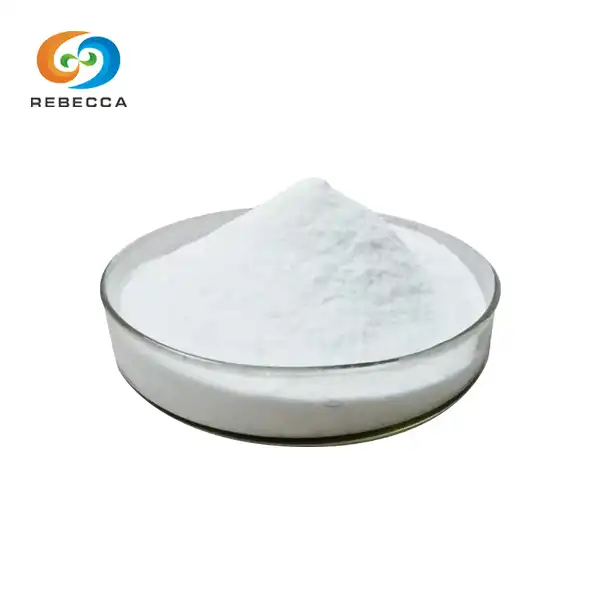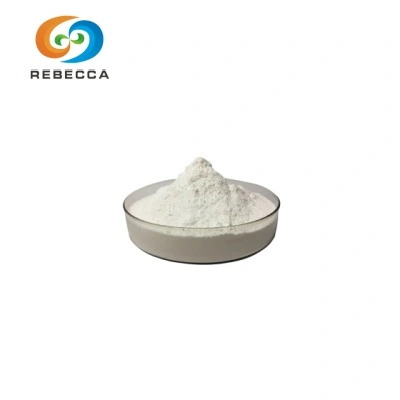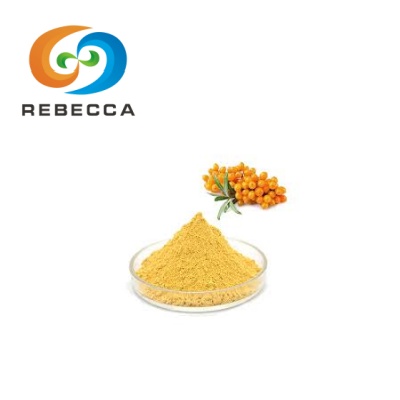What is alpha lipoic acid for?
Alpha-lipoic acid (ALA) has become a chemical of great interest in the fields of functional health and nutritional supplements. This naturally occurring chemical, which the body produces in trace amounts, serves as a coenzyme and antioxidant and is essential for cellular upkeep and energy production. ALA, which is chemically derived from octanoic acid, comes in two forms: the synthetic S-form and the physiologically active R-form. A racemic mixture of the two is frequently seen in supplements. Although it was first investigated for its function in the metabolism of carbohydrates, more recent studies have revealed a variety of possible health advantages, which have made it a hot subject in both consumer health discussions and scholarly literature.

Antioxidant Protection
At the heart of alpha-lipoic acid's health-promoting properties lies its potent antioxidant activity. Unlike many other antioxidants that are either water-soluble (such as vitamin C) or fat-soluble (such as vitamin E), ALA possesses a unique molecular structure that allows it to be effective in both aqueous and lipid environments within the body. This dual solubility enables it to combat free radicals in all cellular compartments, including the cytoplasm, cell membranes, and mitochondria, the powerhouses of the cell where oxidative stress is particularly prevalent.
Free radicals, byproducts of normal metabolic processes and environmental exposures, can cause oxidative damage to DNA, proteins, and lipids, contributing to aging, inflammation, and chronic diseases. Alpha-lipoic acid neutralizes these reactive species by donating electrons, thereby preventing them from causing harmful chemical reactions. Moreover, ALA has been shown to regenerate other antioxidants, such as vitamins C and E, glutathione, and coenzyme Q10, enhancing the body's overall antioxidant capacity. This synergistic effect makes it a valuable component in the body's defense against oxidative stress, which is implicated in conditions ranging from cardiovascular disease to neurodegenerative disorders.
Research in animal and human studies has highlighted the protective effects of alpha-lipoic acid against oxidative damage. For example, a study published in the Journal of Nutritional Biochemistry demonstrated that ALA supplementation reduced oxidative stress markers in individuals with type 2 diabetes, correlating with improved metabolic parameters. Another investigation in rats found that ALA protected against liver damage induced by carbon tetrachloride, attributed to its ability to enhance antioxidant enzyme activity and reduce lipid peroxidation. These findings underscore the role of ALA as a versatile antioxidant that supports cellular health across multiple organ systems.

Diabetic Neuropathy
One of the most well-researched and clinically validated uses of alpha-lipoic acid is in the management of diabetic neuropathy, a common complication of diabetes characterized by pain, tingling, numbness, and weakness in the extremities. This condition arises from long-term high blood sugar levels damaging the peripheral nerves, particularly in the feet and hands. The prevalence of diabetic neuropathy increases with the duration of diabetes, affecting up to 50% of individuals with type 2 diabetes and a similar proportion in type 1 diabetes, making it a significant clinical challenge.
Alpha-lipoic acid has shown remarkable efficacy in alleviating the symptoms of diabetic neuropathy through multiple mechanisms. Its antioxidant properties help reduce the oxidative stress that contributes to nerve damage, while its anti-inflammatory effects modulate pro-inflammatory pathways involved in neuropathic pain. Additionally, ALA has been found to improve nerve conduction velocity and energy metabolism in nerve cells, facilitating their repair and functional recovery. The landmark ALADIN (Alpha-Lipoic Acid in Diabetic Neuropathy) trials, conducted in the late 1990s, demonstrated that intravenous administration of ALA significantly reduced pain scores and improved nerve function in patients with diabetic polyneuropathy. Subsequent studies using oral supplementation have also reported beneficial effects, although the optimal dose and duration of treatment remain subjects of ongoing research.
Clinical guidelines, such as those from the American Diabetes Association, recognize alpha-lipoic acid as a potential treatment option for diabetic neuropathy, particularly for managing neuropathic pain. Patients often report improvements in quality of life, as reduced discomfort allows for better mobility and sleep. It is important to note that while ALA can alleviate symptoms, it should be used as part of a comprehensive diabetes management plan that includes blood sugar control, lifestyle modifications, and regular medical follow-ups. Healthcare providers may recommend doses ranging from 600 to 1200 mg per day, typically divided into multiple administrations to enhance absorption.

Blood Sugar Management
Alpha-lipoic acid has long been recognized for its role in carbohydrate metabolism, making it a valuable supplement for individuals with insulin resistance, prediabetes, or type 2 diabetes. The compound influences multiple pathways involved in glucose homeostasis, primarily by enhancing insulin sensitivity, the ability of cells to respond to insulin, and the uptake of glucose from the bloodstream. Insulin resistance, a hallmark of type 2 diabetes, occurs when muscle, fat, and liver cells become less responsive to insulin, leading to elevated blood sugar levels and subsequent metabolic dysfunction.
Research indicates that alpha lipoic acid improves insulin sensitivity by activating specific enzymes and signaling pathways, such as the AMP-activated protein kinase (AMPK), which plays a key role in glucose uptake and energy metabolism. By stimulating AMPK, ALA promotes glucose transport into muscle cells and inhibits glucose production in the liver, effectively lowering blood glucose levels. Additionally, its antioxidant effects may protect pancreatic beta cells, which produce insulin, from oxidative damage, preserving their function over time. A meta-analysis of clinical trials published in Diabetes Care found that ALA supplementation significantly reduced fasting blood glucose, hemoglobin A1c (a marker of long-term blood sugar control), and triglyceride levels in individuals with type 2 diabetes.
Beyond its effects on insulin sensitivity, alpha lipoic acid may also improve lipid profiles by reducing triglycerides and increasing high-density lipoprotein (HDL, "good" cholesterol), further supporting cardiovascular health in those with metabolic disorders. It is worth noting that while ALA can complement dietary and lifestyle interventions for blood sugar management, it is not a substitute for prescribed medications. Individuals taking antidiabetic drugs should work closely with their healthcare providers to monitor blood glucose levels and adjust dosages as needed, as ALA may enhance the effects of these medications, potentially leading to hypoglycemia (low blood sugar) if not properly managed.

Rebecca alpha lipoic acid powder stands as a premium-quality offering for those seeking the benefits of this versatile compound. With a CAS No. of 1077-28-7 and a specification of 99% purity, our product undergoes rigorous testing using HPLC (High-Performance Liquid Chromatography) to ensure consistency and potency. The light yellow to yellow powder form facilitates easy formulation into dietary supplements, functional foods, or topical applications. Whether used in clinical settings, nutraceutical products, or research applications, Rebecca's alpha-lipoic acid meets the highest standards of quality and safety.
For more information or to place an order, please reach out to us at information@sxrebecca.com. Our team is dedicated to providing detailed product specifications, technical data sheets, and personalized support to meet your specific needs. With Rebecca Bio-Tech, you can trust that you are accessing a reliable source of alpha-lipoic acid, backed by scientific research and a commitment to excellence in nutritional ingredients.
References
[1] Jacob, S., et al. (1995). The antioxidant effects of alpha-lipoic acid in patients with type 2 diabetes mellitus. Journal of Nutritional Biochemistry, 6(11), 654-659.
[2] Sener, G., et al. (2001). Protective effect of alpha-lipoic acid on carbon tetrachloride-induced liver injury in rats. Basic & Clinical Pharmacology & Toxicology, 88(3), 145-150.
[3] Ziegler, D., et al. (1999). Treatment of symptomatic diabetic polyneuropathy with the antioxidant alpha-lipoic acid: A meta-analysis. Diabetic Medicine, 16(2), 152-160.
[4] Evans, J. L., et al. (2008). Alpha-lipoic acid in the treatment of diabetes and its complications. Diabetes Care, 31(Suppl 2), S146-S151.








